Game-Changing Marketing Campaigns That Shaped History
Imagine trying to explain your job as a marketer to someone and they ask the dreaded question: "So what exactly do you do?" It's not an easy one to answer, considering there are so many different types of marketing and job roles that vary from company to company and industry to industry.
But what if I told you that some marketers are actually changing the world? It sounds like a bold claim, but hear me out. There are marketing campaigns throughout modern history that have had a profound and lasting impact on the world we live in today.
And no, I'm not just talking about influencing our shopping habits or the rise of viral “TikTok made me buy it” trends. I'm talking about campaigns that have shaped our values, beliefs, and even our way of life.
Still sceptical? Well, we’ve compiled a list of our favourite history-changing marketing campaigns that prove just how much of an impact marketing can have on our world.
A diamond is forever thanks to De Beers
You may not have heard of De Beers, but I’m certain you’ve heard their most famous marketing slogan - A Diamond is Forever. What if I told you that not only is that a clever marketing slogan, but it also helped change the way people think about diamonds forever?
De Beers is a diamond mining and marketing company that dates back to the 1880s. At the time, diamonds were not widely considered desirable or all that valuable. However, in 1870 diamond mines were discovered in South Africa and the diamond industry as we know it today began to take shape. The goal was to increase the demand for their product by "perpetuating the illusion of scarcity of diamonds.” In other words, they wanted diamonds to seem rare and valuable.
It took a little while, but in the early 20th century, things started to pick up. Specifically, De Beers saw an opportunity to change the market with a massive marketing campaign that aimed to create demand for diamond engagement rings specifically. They first introduced the slogan "A Diamond is Forever" in 1947, which implied that a diamond was not only a symbol of love but also a timeless investment. They created a narrative that diamond rings were the ultimate expression of love and commitment and that a man who truly loved his partner would invest in a diamond ring to prove his affection.
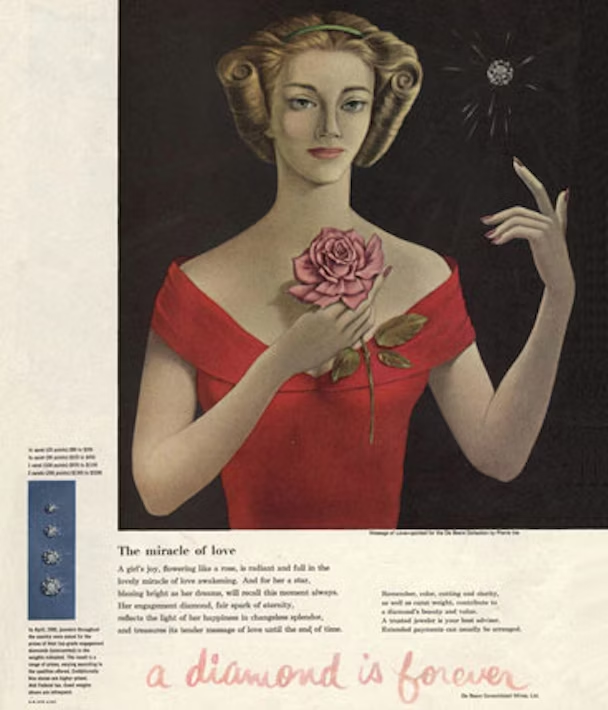
Through clever marketing, De Beers was able to create a demand for diamond engagement rings that did not exist before. The diamond industry is now worth billions of dollars (between 1939 and 1979, their wholesale diamond sales in the United States alone increased from $23 million to $2.1 billion), and De Beers remains one of the largest players in the market.
The partnership that changed sports advertising
Nike and Serena Williams. Adidas and Lionel Messi. Nike and Lebron James. All famous partnerships that were made possible because of one marketing decision.
Nike's signing of Michael Jordan in 1984 was a landmark moment in both sports and marketing history. At the time, Jordan was a rising star in the NBA, having just completed his rookie season with the Chicago Bulls. Nike was a relatively new company, having only been founded in 1964, but was making a name for itself in the world of sports apparel and footwear.
The decision to sign Jordan was a bold move for Nike, as it involved a significant investment in an unproven athlete. However, the gamble paid off, as Jordan went on to become one of the most iconic and beloved athletes in history. Nike's association with him helped to solidify the brand's position as a leader in the sports apparel and footwear market.
The success of the Jordan-Nike partnership was due in part to the innovative marketing strategies employed by the company. Nike created a line of shoes and apparel specifically for Jordan, and marketed them using a variety of innovative techniques. For example, Nike released a series of TV commercials featuring Jordan and Spike Lee, which helped to create a sense of excitement and anticipation around the release of each new Jordan product.
The Jordan-Nike partnership also helped to popularise the concept of the "athlete endorsement" in marketing. Prior to the 1980s, it was relatively uncommon for athletes to endorse products, and when they did, it was usually in a low-key or subtle way. However, the success of the Jordan-Nike partnership showed that athletes could be powerful and effective spokespersons for brands, and paved the way for the many athlete endorsements that we see in advertising today.
In fact, this was such a landmark partnership that it’s now being made into a film - Air - starring Viola Davis, Matt Damon, and Ben Affleck. How’s that for a marketing legacy?
Marketing revolutionised the women’s razor market
Surveys consistently estimate that up to 99% of Western women remove their body hair regularly, but in historical terms, this is a relatively new phenomenon, and it came about largely due to marketing.
Prior to the early 20th century, women's body hair was not a topic of discussion or concern, and there was no market for women's shaving products. However, in 1901, the safety razor was introduced and Gillette saw an opportunity.
In 1915, the company introduced the first razor specifically marketed to women, called the Milady Decollete. They turned specifically to magazine advertising, focusing on appealing to the modern woman and fixing the embarrassing problems that came with shorter hemlines and sleeves (namely, body hair).
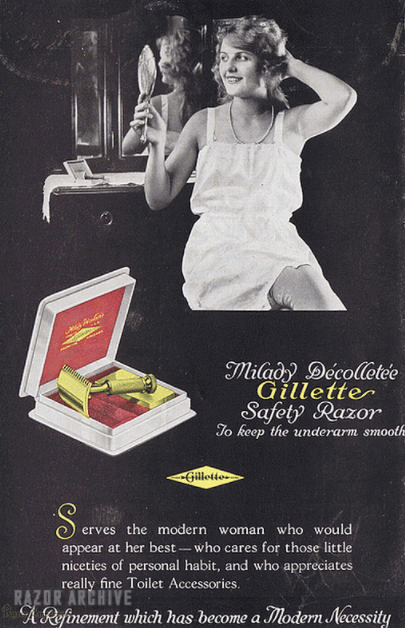
Around this same time, the fashion magazine Harper's Bazaar began featuring images of models with hairless legs, creating a new beauty standard that emphasized the importance of smooth, hairless skin. The magazine even went so far as to tell the story of a fictional young woman who was ostracised by society for having hairy legs, further emphasizing the idea that hairlessness was a necessary component of femininity and attractiveness. By 1964, 98% of American women admitted to removing at least some body hair.

These marketing campaigns helped to create a new market for women's shaving products, which quickly expanded to include shaving cream, razors, and other accessories. The idea that women should shave their underarms and legs became ingrained in popular culture, and the women's shaving industry continues to thrive today. In fact, the market for women’s razors in 2022 was $3.97 billion and is expected to reach $5.28 billion by 2028, all thanks to marketing.
The British are the reason we eat so many carrots
While they are good for your eyes, wolfing down a bag of baby carrots every day is not going to suddenly make your vision 20/20. So where did this idea come from? Well, marketing. Or to be more accurate, propaganda.
During World War II, the British Ministry of Information launched a propaganda campaign to promote the consumption of carrots as a way to improve eyesight. Why? To cover up the real reason for British pilots' success in shooting down enemy planes - the development of radar technology.

The Ministry of Information spread the myth that British pilots had such good aim because they ate a lot of carrots, which were said to be high in vitamin A and therefore good for eyesight. The campaign was successful in part because it was based on some scientific truth - vitamin A is actually essential for good eyesight and a deficiency can cause blindness.
It also didn’t hurt that the British public was already being encouraged to grow their own vegetables as part of the war effort, so promoting the consumption of carrots fit in with this broader campaign, the impact of which was significant.
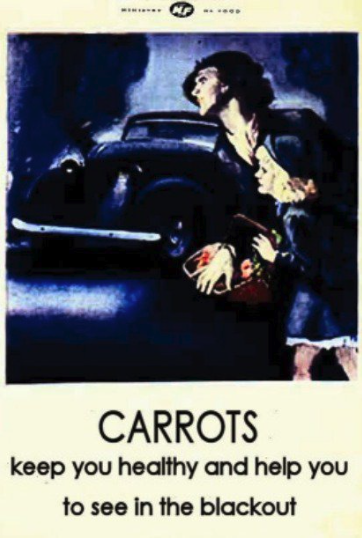
Carrot consumption in the UK increased, and the myth that carrots improve eyesight persists to this day. According to a survey conducted by the American Academy of Ophthalmology, 60% of Americans believe that carrots can improve eyesight. More broadly, the campaign demonstrated the power of propaganda and the government's ability to shape public opinion through media campaigns.
Pink is for boys?
Gender reveals are more common than ever, with grand parties sometimes making headlines, but one thing is always the same - pink for girls and blue for boys. However, this concept of gendered colours is an invention of marketing.
The shift towards gendered colours was largely driven by marketing and advertising campaigns in the mid-20th century. Companies like Sears and Roebuck began marketing clothing for children based on gender, with boys' clothing featuring darker colours like blue and brown, and girls' clothing featuring lighter colours like pink and yellow.
During the 1940s and 1950s specifically, marketers began to promote the idea of pink as a "girly" colour and blue as a "boyish" colour. The reasons behind this shift are not entirely clear, but it’s likely that it was influenced by broader cultural trends that emphasized traditional gender roles and stereotypes.
Over time, the idea of gendered colours became so entrenched in popular culture that it is now widely accepted as a norm.
Do you really need milk?
Did you know that kale has more calcium than milk? If not, that’s probably because of some very clever marketing and a little bit of lobbying
Milk has been a part of the human diet for centuries, but it wasn't until the 20th century that it became a staple in many countries, including the United States. One of the reasons for this is the successful marketing campaigns that were launched to promote milk and its health benefits.
In the 1980s and 1990s, the dairy industry in the United States specifically faced declining sales as people turned to other beverages such as fizzy drinks and fruit juice. In response, the California Milk Processor Board launched the "Got Milk?" campaign in 1993, which featured celebrities and athletes with milk moustaches and the tagline "Got Milk?". If you were around during that time, you probably saw the advertisements at some point.
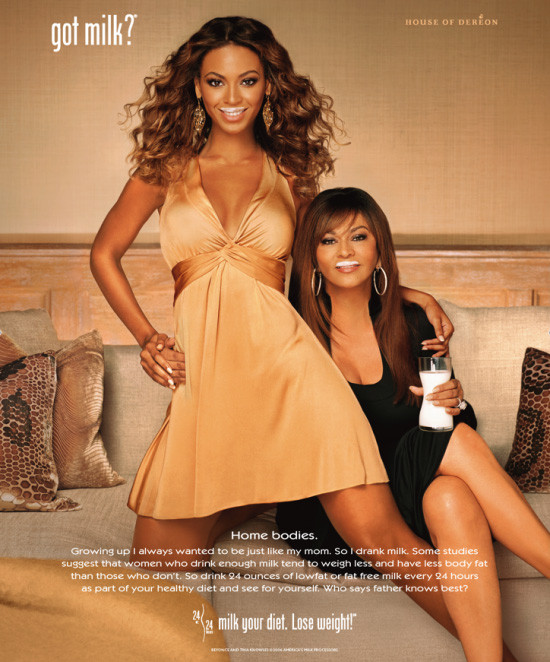

The campaign was a huge success and helped to increase milk consumption. It also created a buzz around milk, making it cool and fashionable to drink, while emphasizing its health benefits, such as its calcium content, which is important for bone health.
The success of the "Got Milk?" campaign led to similar campaigns in other countries, which helped to increase milk consumption around the world. Today, milk is considered a dietary staple in many parts of the world, though dairy consumption as a whole is decreasing thanks to products like nut milks and an increase in veganism.
Orange juice is a breakfast staple, according to marketers
When was the last time you had orange juice with breakfast? According to the USDA, on any given day, 21% of Americans will drink it. But it hasn’t always been the case and you have Sunkist to thank.
Sunkist is a cooperative of citrus growers that has been in operation since the late 1800s. In the 1920s, Sunkist began to promote the health benefits of oranges and orange juice, including the high levels of vitamin C and other nutrients. At the time, many people believed that a glass of orange juice in the morning could help boost their immune system and overall health.
Sunkist launched a major advertising campaign in the 1930s that targeted women, who were typically responsible for preparing breakfast for their families. The campaign emphasized the convenience of drinking orange juice in the morning and highlighted the importance of starting the day with a nutritious breakfast. Sunkist also promoted the use of orange juice in recipes for breakfast dishes like pancakes and muffins.
Sunkist's efforts to promote the health benefits of orange juice, combined with its targeted advertising campaign, helped to make orange juice a popular choice for breakfast in households across the world, but more specifically, the US.
Your coffee break is a marketing invention
Coffee breaks are part of corporate life, all thanks to the Pan-American Coffee Bureau (PACB).
The PACB was a trade organization formed in the early 20th century to promote coffee consumption in the United States. In the 1950s, the PACB launched a major advertising campaign to encourage Americans to take coffee breaks during their workday.

At the time, many workers were accustomed to taking short breaks during the day, but these were often spent smoking cigarettes or chatting with colleagues. The PACB saw an opportunity to promote coffee as a way to enhance these breaks and increase coffee consumption.
The advertising campaign emphasized the social and psychological benefits of taking a coffee break, such as providing a brief respite from work, improving alertness and productivity, and promoting social interaction between coworkers. It also promoted the idea of coffee breaks as a shared cultural experience that could bring people together.
The PACB worked closely with businesses and employers to promote the idea of coffee breaks, providing educational materials and promotional items such as coffee mugs and posters. The organization also established a National Coffee Break Contest, which encouraged businesses to create the most creative and enjoyable coffee break environments for their employees.
The PACB's campaign was highly successful, and coffee breaks quickly became a common part of American work culture. Today, the coffee break is a well-established tradition in many workplaces, and coffee is one of the most widely consumed beverages in the world.
Business Casual care of Levi’s
In today's modern business world, dress codes have become more flexible and casual. However, it wasn't always this way. In the mid-1990s, Levi's launched a marketing campaign called "Levi's Business Casual" that aimed to promote a new style of dress that blended casual and formal elements. The campaign was designed to appeal to young professionals who wanted to dress in a way that was comfortable and stylish, while still looking professional in the workplace.
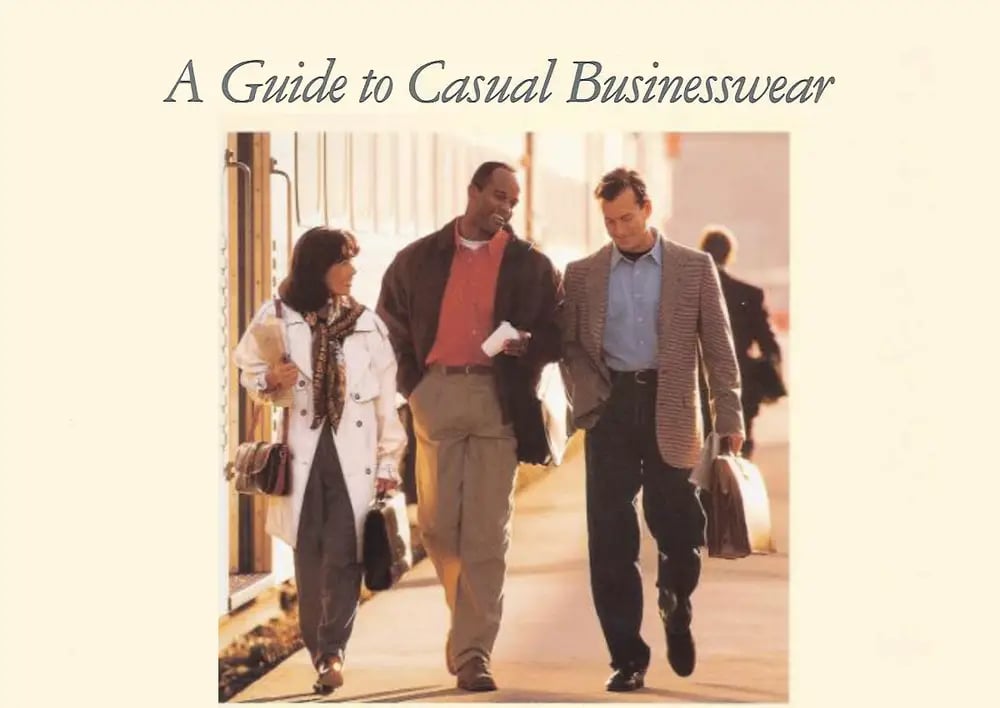
The campaign featured advertisements that showed models wearing Levi's jeans paired with dress shirts, blazers, and other professional clothing. This was a groundbreaking move, as many workplaces had strict dress codes that required suits and ties, even on Fridays. The Levi's Business Casual campaign helped to break down these dress codes and make it acceptable for people to dress in a more relaxed and comfortable way at work.
Thanks to this campaign, "dress-down" Fridays became a thing, and many other companies began adopting more casual dress codes in general. The Levi's Business Casual campaign contributed to a broader trend of casualisation in the workplace, which has continued to this day. Nowadays, it's common for people to wear jeans, trainers, and other casual clothing in the workplace.
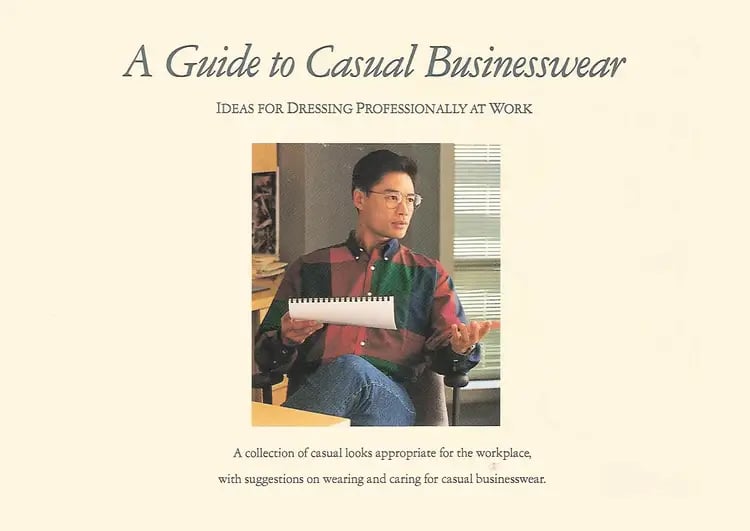
Marketing can have a profound impact on the world. We interact it with every day and it guides more of our decisions than we even know. As the industry continues to evolve, there will continue to be campaigns that push society in new and innovative directions.
If you’re looking for a way to track the impact of your own marketing campaigns - world-changing or not - try Hurree for free. 
Share this
You May Also Like
These Related Stories

The 4 Common Mistakes When It Comes to Building Your Brand
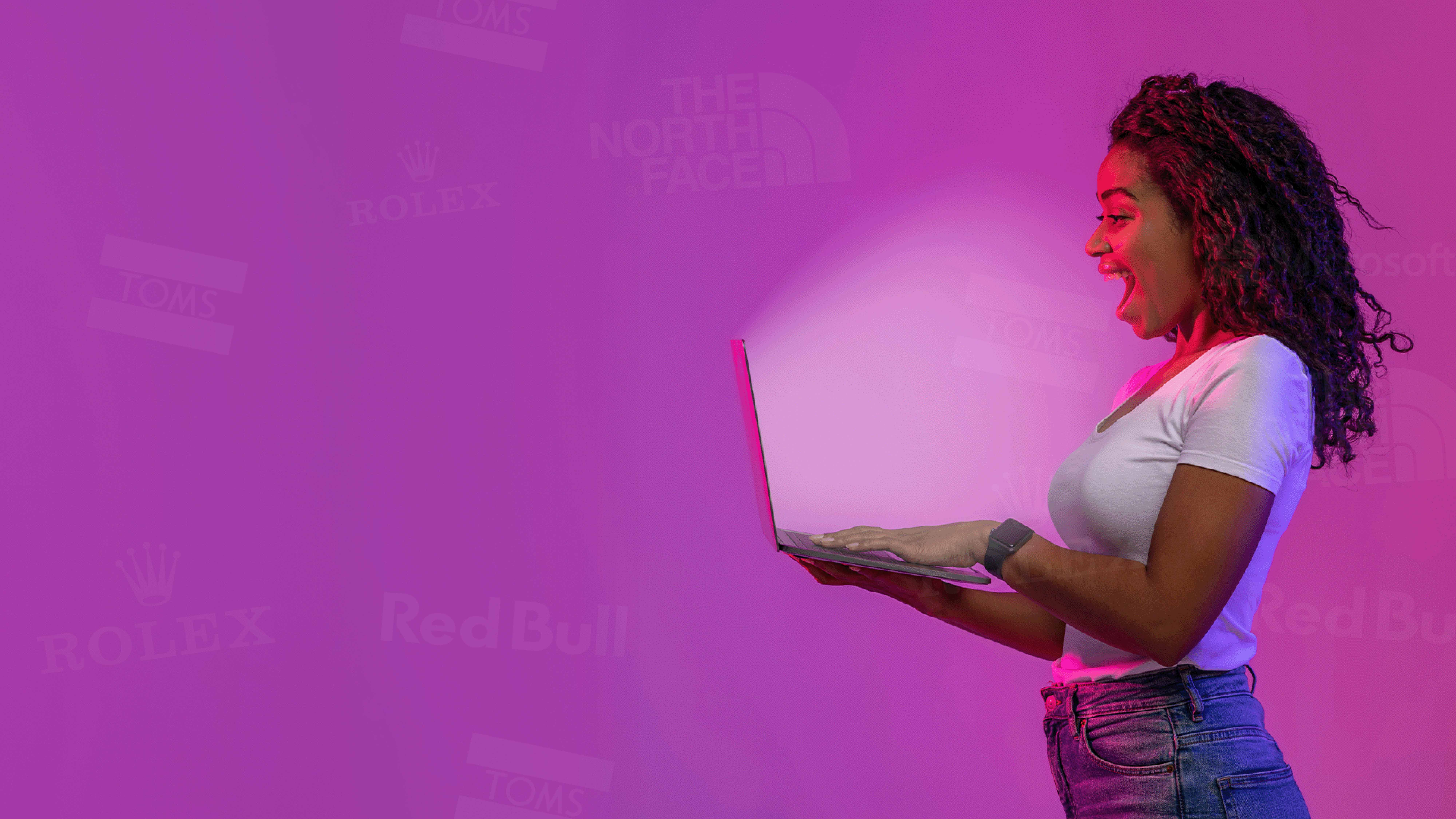
5 Companies Who Nailed Their Brand Personality


